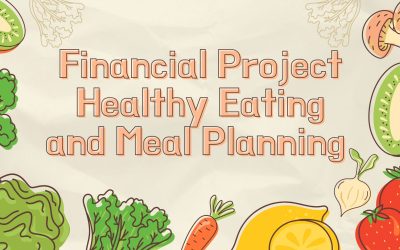Overview:
In this lesson, students will learn about nature bathing and the positive effects the activity has on their nervous system and their overall mood. Students will go outside, take a nature walk and collect sticks, rocks, leaves, and flowers while on their walk. After the nature walk, instruct the students to create “nature art” with the objects collected. Students can use their gathered items to create works of art to remind them of their nature bathing experience. Students will be encouraged to write gratitude words, affirmations, or positive phrases on their “nature art”.
NB Curricular Connections
Explore Your World
- Strand: Well-Being – Big Idea: Physical Health and Active Participation – Skill Descriptor: Analyze personal safety and healthy practices.
- Strand: Well-Being – Big Idea: Emotional Health and Positive Identities – Skill Descriptor:
- Explore activities that foster enjoyment and well-being.
- Recognize that feelings and emotions can impact well-being, relationships, and the way we engage with others.
Personal Wellness 3-5
-
-
- Strand: Wellness – Big Idea: Healthy Lifestyle – Skill Descriptor:
- Grade 3: Analyze personal safety and healthy practices.
- Grade 4: Describe personal safety and healthy practices.
- Grade 5: Assess personal safety and healthy practices.
- Strand: Mental Fitness – Big Idea: Mental Health Strategies – Skill Descriptor:
- Grade 3: Demonstrate self-calming strategies to regulate emotional reactions.
- Grade 4: Identify strategies for regulating emotional reactions.
- Grade 5: Identify strategies for seeking support for self and others.
- Strand: Mental Fitness – Big Idea: Positive Mental Health – Skill Descriptor:
- Grade 3: Explore the importance of talking about emotions and emotional responses.
- Grade 4: Describe the seven primary emotions and their expression.
- Grade 5: Identify ways to manage stress and regulate emotions.
- Strand: Wellness – Big Idea: Healthy Lifestyle – Skill Descriptor:
-
What you’ll need:
- Mindfulness Resource Kit (PDF Attached)
- Items from nature. (Sticks, leaves, rocks, flowers, sand)
- Glue, markers, paper
- Relaxing music and speaker (optional)
Instructions:
Step 1: Begin with a discussion about how to be mindful and how to practice it. Move into a discussion about nature bathing, which involves going in nature and being present with the natural environment all around you. This allows you to “take a bath” in the serenity and soothing, clean air of natural spaces. Taking a nature bath helps to focus your mind, helps you to be calm, and puts you in a good mood!
Step 2: Next, take the students for a nature walk. If you have access to a wooded area, that is best. If not, walking meditation can be done anywhere inside or outside. Nature bathing and mindful walking in nature are the same things! If possible, have students collect pieces of nature such as sticks, rocks, leaves, and flowers while on their walk. Regardless of where you are taking your mindful walk, here are some things to remind students:
- Walk slowly, noticing how your feet touch the surface you are walking on.
- Notice the feel of the surface below you.
- Notice which part of your foot first touches the surface below you. Is it your heel or your toe? Do not try to change anything, just notice it.
- Be aware of any sounds you may hear around you.
- Be aware of any smells that you notice.
- Notice any colours and shapes of things around you.
- You are simply observing and not trying to change anything or judge anything.
Step 3: After the nature walk, instruct students to create “nature art” with the objects collected. Students can use their gathered sticks to create works of art to remind them of their nature bathing experience. If they have pieces of wood, sticks or rocks, they can use markers to write gratitude words, affirmations, or positive phrases of their choosing. Allow students time to reflect and come up with authentic words/phrases on their own as much as possible. Alternatively, students can use various items from nature to make shapes, designs, scenes or letters and glue them on paper to make their piece of art. Encourage students to feel free, creative, and expressive and allow them to be non-judgmental of their artwork.
Additional Web Resources:
- Article: Walking Mindfulness Ideas
- YouTube: Walking Mindfulness for Kids (Cosmic Kids)
- Nature Bath Benefits
Questions Related to The Labour Market and Employment Opportunities In NB:
- Forests cover 85 percent of New Brunswick’s landscape. What kinds of jobs are available in New Brunswick if you like to work in the woods or in nature? (Planting, farming, gardening, logging, operating tractors and other heavy equipment, geology, conservation, fisheries or wildlife officer, harvester, surveyor)
- Being an artist is an occupation. How many different kinds of artists can you think of? (Painters, sculptors, woodworkers/carvers, graphics artists, sketch artists, interior decorators, mural artists, textile artists, cake decorators, etc.)
Reflection Activity
Please see the attached PDF for several choices on how you and your learners can reflect upon today’s activity.




